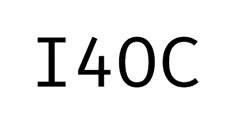Neuropsychological sequelae in patients with giant prefrontal aneurysm after surgery
Keywords:
activity psyquic personal, syndrome prefrontal, Model TIPAbstract
The aim of this investigation is to describe and analyze the conditions of the activity staff psychic patients after prefrontal cerebral aneurysm, and explain the commitment of its functional activity through informational theoretical model (Ortiz,1998, p. 54). The sample consisted of all patients by the doctor and / diagnostics specialist, which they removed an aneurysm bean that has the distinction of being Giant, who request ablacin a segment this area, and other techniques neurosurg of this important structure of the neocortex for processing affective emotional, cognitive and conative volitional production of information psychic aware of the individual. The sampling was not Probabilistic, intentional, and data were collected during the period January 2009 to May 2010. The design was an observational cross-sectional and retrospective essay type signal been rated clinically Diaz, M. (UPCH, 2009, p.34) The study was constituda poblacin for all admissions to the service of HNERM Neurosurg (Hospitalizacin 13 B) It administered Batery Neuropsycologic revised POC -2005 (Sarria, Llaja & Garcia, 2012 pp. 120- 156) for the analysis of data it used SPSS, version 17, for the calculation of frequencies and percentages, and other measures pharametrics, to establish the dominance of deficit, in three components of the System of Personality. Arrived to the following conclusions: 1. The prefrontal patient surgery for aneurysm, have no significant sequel after the Intervention quirurgic. 2. In the arrangement of figures subtest symbolo-digits (WAIS) show an unpacking or lower, we may indicate that in this capacity settings planificaciny shall sequential in its he served depleted. Do not grab the test praxic (Luria, object assembly, and construction with blocks.). Where he served standares is within normal. 3. The postoperative patients show mild disorder mixed affective, both depressed and anxious, which may possibly be explained as a reaction to adaptation structural background to the table. 4. We do not have results at the component sequel conativevolitional, rated by some reagent specifically it through of clinic method, we can say that none of our patients present disorders at this level.
References
Alvarez-Simonetti, L. & col. (2009). Aneurismas cerebrales gigantes. Parte I:Aneurismas cerebrales gigantes. Parte II: Patogénesis, aspectos clínicos, imágenes y evaluación diagnóstica. Revista Peruana de Neurociencias. Revistas Especializadas Peruanas, 1(1), 13-21.
Barboza, M. Sepúlveda, S. & Montalvo, D. (2007). Neurocisticercosis frontal y déficit de atención. Revista Colombia Médica. Corporación Editora Médica del Valle, 38 (1), 21-27.
Díaz, M. (2009). Curso Taller Avanzado. Técnicas y métodos de Investigación Científica. Lima: Manual UPCH.
García, P., Llaja, V., Sarria, C. & col. (2009). Aptitudes cognitivas y estrategias de memorización secuencial de los alumnos de un Centro Educativo privado de Comas. Revista de Investigación en Psicología. Instituto de Investigaciones Psicológicas de la UNMSM, 12 (1), 45-59.
Godoy, J. (1999). Psicología de la Salud: delimitación conceptual. En: Simón, M. (1999). Manual de Psicología de la Salud. Madrid: Biblioteca Nueva.
Luria,A. (1980). Neuropsicología de la Memoria. Madrid: Blume.
Luria,A. R. (1974). Cerebro en Acción. Barcelona: Fontanella.
Llaja, V., Sarria, C., & García , P. (2009). Evaluación neuropsicológica del delirio y la incidencia de los factores de riesgo en pacientes de Cuidados Intensivos del HNERM. Revista de la Academia Peruana de Neurociencias del Perú, 2 (1), 32-36.
Llaja,V., Sarria, C., & García, P. (2008). Déficit cognitivos en la enfermedad de Parkinson interpretados bajo el modelo informacional de la Personalidad. Revista de la Academia Peruana de Neurociencias del Perú, 1 (1), 25-28.
Martín, A., Fernández-Armayor, V., Moreno, J. M., García, M. L., Moreno, J. L., Rodríguez, F. A., Hierro, M., Medialdea, J., & Revilla, B. (1995). Neurobiología del córtex frontal e hipótesis sobre su papel como procesador natural del caos determinista. Revista Española de Neurología, vol. 10, pp. 269-289.
rtiz, P. (2008). Educación y formación de la Personalidad. Lima: Fondo Editorial de la Universidad de Ciencias y Humanidades.
Ortiz. C. P. (2004). Introducción a la Psicobiología del hombre. Cuadernos de Psicobiología Social. Talleres Gráficos .U.N.M.S.M. Vol. 1.
Ortiz, C. P. ( 2004). El nivel consciente de la actividad personal. Cuadernos de Psicobiología Social. Talleres Gráficos. U.N.M.S.M. Vol. 6.
Ortiz, C. P. (1998). El Nivel Consciente de la Memoria. Lima: Fondo Editorial de la Universidad de Lima.
Ortiz ,P. (1996). La formación de la Personalidad. Lima: Dimaso Editores.
Ortiz, P. (1994). El Sistema de la Personalidad. Lima:Talleres Gráficos. U.N.M.S.M.
Reynolds, C. R. & Hickman, J. A. (2004). Draw-A-Person Intellectual Ability Test for Children,Adolescents, and Adults (DAP:IQ). Austin.
PRO-ED. Lindgren, S. D., & Richman, L. D. (1984). Inmediate memory functions verbally deficient reading-disabled children. Journal of Learning DisabilitiesUniversidad Nacional Mayor de San Marcos.
Downloads
Published
How to Cite
Issue
Section
License
Copyright (c) 2014 PsiqueMag

This work is licensed under a Creative Commons Attribution-NonCommercial-NoDerivatives 4.0 International License.
You are free to:
- Share — copy and redistribute the material in any medium or format
- The licensor cannot revoke these freedoms as long as you follow the license terms.
Under the following terms:
-
Attribution — You must give appropriate credit, provide a link to the license, and indicate if changes were made. You may do so in any reasonable manner, but not in any way that suggests the licensor endorses you or your use.












